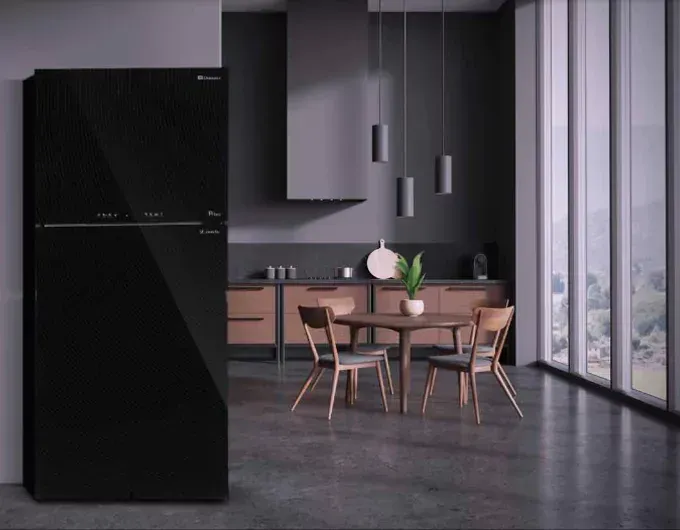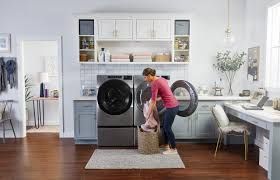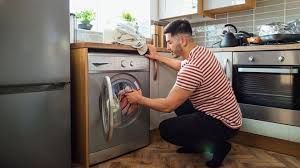How to Repair a Whirlpool Fridge?
Whirlpool refrigerators are known for their reliability and advanced features. However, like any household appliance, they can occasionally experience issues. Whether it's a minor glitch or a significant malfunction, knowing how to repair your Whirlpool fridge can save you time and money. This guide will walk you through the most common problems and their solutions, ensuring your fridge stays in top shape.
From temperature inconsistencies to unusual noises, we've got you covered with step-by-step instructions and troubleshooting tips. Additionally, we'll provide maintenance advice to help you prevent future problems and extend the lifespan of your appliance. With a little effort and the right knowledge, you can keep your Whirlpool refrigerator running smoothly for years to come.
Common Issues with Whirlpool Fridges
Before diving into the repair process, it's essential to identify the common problems that Whirlpool refrigerators may encounter:
- Temperature Issues: The fridge is too warm or too cold.
- Water Leakage: Water pooling under the fridge or inside the compartments.
- Ice Maker Problems: Ice maker not producing ice or dispensing it improperly.
- Noisy Operation: Unusual noises such as buzzing, clicking, or humming.
- Door Seal Problems: Doors not sealing properly, leading to temperature inconsistencies.
Essential Tools and Materials
To effectively repair your Whirlpool fridge, you'll need the following tools and materials:
- Screwdrivers (both flathead and Phillips)
- Multimeter
- Nut driver set
- Pliers
- Replacement parts (thermostats, gaskets, water filters, etc.)
- Towels or rags
- Cleaning solution
- Flashlight
Step-by-Step Repair Guide
Let's explore how to address the most common issues with your Whirlpool fridge.
Temperature Problems
If your fridge is not maintaining the correct temperature, follow these steps:
- Check the Thermostat Settings: Ensure the thermostat is set to the recommended temperature (typically 37°F for the fridge and 0°F for the freezer).
- Clean the Condenser Coils: Dirty coils can impede cooling efficiency. Unplug the fridge, locate the coils (usually at the back or bottom), and clean them using a vacuum or brush.
- Inspect the Door Seals: A faulty door seal can let warm air in. Close the door on a piece of paper and try to pull it out. If it slides out easily, the seal may need replacing.
- Test the Thermistor: The thermistor regulates temperature. Use a multimeter to check its resistance. If it’s out of range, replace it.
Water Leakage
Water leakage can be caused by several factors. Here's how to address it:
- Check the Water Filter: A clogged or improperly installed filter can cause leaks. Replace the filter if necessary.
- Inspect the Drain Pan: The drain pan collects condensation. If it's cracked or overflowing, replace it.
- Clear the Defrost Drain: A blocked defrost drain can cause water to pool. Use a pipe cleaner or warm water to clear any obstructions.
- Examine the Water Line: Ensure the water line is securely connected and not damaged. Replace any faulty parts.
Ice Maker Malfunctions
Ice maker issues can be frustrating. Here’s how to troubleshoot them:
- Ensure the Ice Maker Is On: Check the ice maker’s switch and make sure it’s turned on.
- Inspect the Water Supply Line: Ensure the line is not kinked or frozen. Thaw it if necessary.
- Check the Water Inlet Valve: The valve controls water flow to the ice maker. Test it with a multimeter and replace it if it’s defective.
- Examine the Ice Maker Assembly: Look for any broken or worn-out components. Replace the assembly if needed.
Noisy Operation
If your fridge is making unusual noises, follow these steps:
- Identify the Source of the Noise: Determine whether the noise is coming from the back, bottom, or inside the fridge.
- Check the Condenser Fan: The fan can become noisy if obstructed or worn out. Clean or replace it as necessary.
- Inspect the Evaporator Fan: Located inside the freezer, this fan can also cause noise. Replace it if it’s damaged.
- Level the Fridge: Ensure the fridge is on a level surface to prevent rattling noises. Adjust the leveling feet if needed.
Preventive Maintenance Tips
Regular maintenance can help prevent many common fridge problems:
- Clean the Coils: Clean the condenser coils every six months to ensure efficient cooling.
- Replace Water Filters: Change the water filter every six months or according to the manufacturer’s recommendations.
- Check Door Seals: Regularly inspect and clean the door seals to ensure they’re in good condition.
- Defrost the Freezer: Manually defrost the freezer if frost buildup exceeds a quarter inch.
- Keep the Fridge Full: A well-stocked fridge maintains its temperature better than an empty one.
When to Call a Professional
While many repairs can be done at home, some issues require professional expertise:
- Electrical Problems: If you suspect electrical issues, it’s best to call a professional to avoid safety hazards.
- Refrigerant Leaks: Handling refrigerant requires specialized training and equipment.
- Complex Component Replacements: If the repair involves complex parts like the compressor or control board, consider professional help.
Final Thoughts
Repairing your Whirlpool fridge can be straightforward if you know what to look for and how to address common issues. By following this comprehensive guide, you can troubleshoot and fix many problems on your own, saving time and money. Remember to perform regular maintenance to keep your fridge running efficiently and extend its lifespan. If you encounter more complex issues, don’t hesitate to call a professional for assistance.
Keeping your Whirlpool fridge in top condition ensures it will continue to serve your household needs effectively. With the right tools, a bit of knowledge, and some patience, you can tackle most repairs and enjoy the reliability that Whirlpool appliances are known for.




